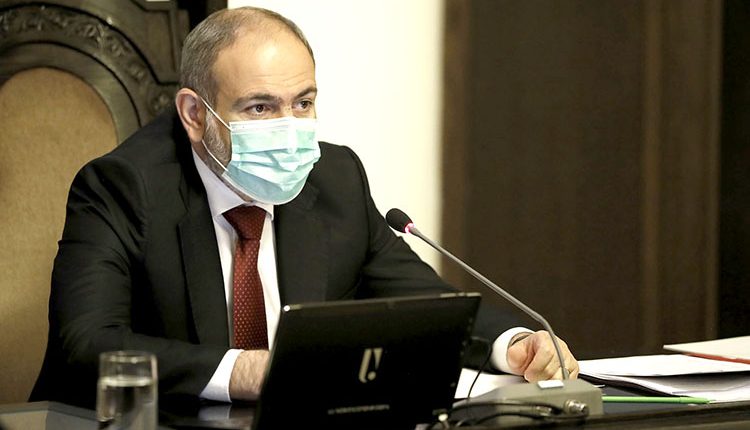YEREVAN — Prime Minister Nikol Pashinyan expressed hope on Thursday that Armenia will practically overcome its coronavirus crisis by September, citing a “substantial” drop in daily infections recorded by the health authorities over the last two weeks.
“As of yesterday, we had less than 9,000 active [coronavirus] cases for the first time since June 11,” Pashinyan argued during a weekly cabinet meeting in Yerevan.
“We had 259 new infections yesterday,” he said. “We had less than 400 daily cases for the sixth consecutive day. We previously had such a situation … on May 24.”
The Armenian Ministry of Health reported an average of 550-600 cases a day in the first half of July. The daily numbers of new cases exceeded 730 at one point in late June.
Deaths directly or indirectly caused by COVID-19 have also fallen in recent days. The ministry said on Thursday morning that 5 more people died from the disease in the past 24 hours, bringing the country’s official death toll to 728. It reported approximately 15 fatalities a day from July 6 through the end of last week.
Pashinyan attributed the decreased numbers to a stricter enforcement of anti-epidemic rules set by his government and people’s greater compliance with them. “We all must continue to follow the rules just as strictly no matter how uncomfortable and unpleasant they are for us,” he said.
The prime minister urged Armenians to continue to wear mandatory face masks in all public spaces, practice social distancing and frequently wash hands. “We hope that each of you will take this responsibility and confront this challenge so that we can declare the end of the crisis in September,” he said.
Deputy Prime Minister Tigran Avinyan told the Armenian parliament on July 14 that the government hopes to cut the daily number of new cases to roughly 140 by the beginning of September. He said this would allow the government to reopen the country’s schools shut down by it in March.
Avinyan, who coordinates the government’s response to the pandemic, announced on Wednesday that his office is now working on detailed safety guidelines that should allow libraries, museums, theaters and other cultural institutions to also reopen soon.
The Ministry of Health spokeswoman, Alina Nikoghosian, described the latest figures as further proof of a continuing fall in the country’s infection rates. She attributed it to an increased number of Armenians wearing mandatory face masks in all public spaces and following other anti-epidemic rules set by the government.
“We have been more vigilant during the last few months,” Nikoghosian told RFE/RL’s Armenian service. “I hope that this pace [of improvement] will continue.”
Nikoghosyan emphasized the fact that for several consecutive days the number of people recovering from COVID-19 has exceeded that of new infections. But she cautioned that so far there has been no sizable drop in the number of COVID-19 patients that are in a severe or critical condition.
The deputy director of the Surb Grigor Lusavorich Medical Center, Armenia’s largest hospital treating such patients, also spoke of an improving epidemiological situation. “I can say for certain that the number of deaths will fall further in the coming weeks given the decrease in severe cases,” said Petros Manukyan.
Manukyan said that around one-fifth of intensive-care beds at his hospital are currently vacant. As recently as on July 13, Health Minister Arsen Torosyan noted a continuing lack of such beds at the Surb Grigor Lusavorich and other Armenian hospitals dealing with the coronavirus.
A total of 38,196 coronavirus cases have been registered in Armenia to date, making it one of the hardest hit counties worldwide.










